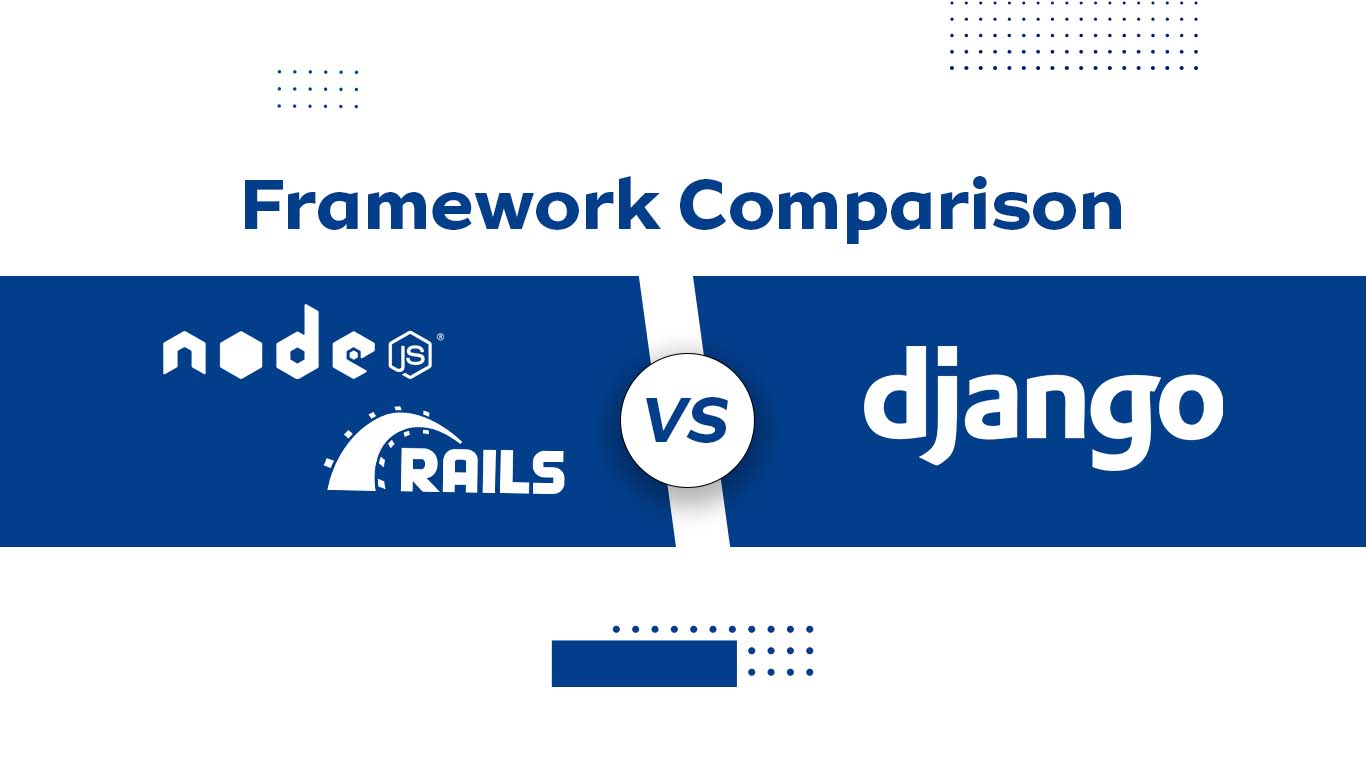Node.js vs Ruby on Rails vs Django: A Comprehensive Comparison
In the dynamic world of web development, the choice of framework can significantly impact the success of a project. Node.js, Ruby on Rails, and Django are three of the most popular and versatile frameworks available today. Each offers unique advantages and caters to different development needs. In this blog post, we will delve into a detailed comparison of these frameworks, exploring their key features, strengths, weaknesses, and use cases.
Node.js: A Scalable and Real-time Solution
Node.js is a JavaScript runtime environment that is ideal for building highly scalable and real-time applications. Its event-driven, non-blocking I/O model allows it to handle a large number of concurrent connections efficiently. Node.js is particularly well-suited for applications that require real-time updates, such as chat applications, online games, and streaming services.
Key Features of Node.js:
- Asynchronous programming
- Event-driven architecture
- Large and active community
- Rich ecosystem of modules and libraries
- Cross-platform compatibility
Use Cases:
- Real-time applications (chat, gaming, streaming)
- Single-page applications (SPAs)
- RESTful APIs
- Internet of Things (IoT) applications
Ruby on Rails: A Convention Over Configuration Framework
Ruby on Rails, often referred to as Rails, is a full-stack web application framework written in the Ruby programming language. It is known for its emphasis on convention over configuration, which simplifies development by providing a structured approach to building applications. Rails is a great choice for projects that require rapid development and maintainability.
Key Features of Ruby on Rails:
- Convention over configuration
- Model-View-Controller (MVC) architecture
- Object-oriented programming
- Extensive built-in features and libraries
- Strong community and ecosystem
Use Cases:
- E-commerce applications
- Social networking platforms
- Content management systems (CMS)
- Enterprise applications
Django: A Python-Based Framework for Rapid Development
Django is a high-level Python web framework that follows the Model-View-Template (MVT) architecture. It is designed to promote rapid development and clean, pragmatic design. Django is a popular choice for building complex web applications, including content management systems, social networks, and scientific computing projects.
Key Features of Django:
- Model-View-Template (MVT) architecture
- Object-relational mapper (ORM)
- Built-in security features
- Scalability
- Large and active community
Use Cases:
- Content management systems (CMS)
- Social networking platforms
- Scientific computing applications
- Data-driven websites
Choosing the Right Framework: A Comparison
| Feature | Node.js | Ruby on Rails | Django |
|---|---|---|---|
| Programming Language | JavaScript | Ruby | Python |
| Architecture | Event-driven, non-blocking | MVC | MVT |
| Performance | High performance for I/O-bound tasks | Good performance overall | Good performance, especially for CPU-bound tasks |
| Scalability | Excellent scalability | Good scalability | Good scalability |
| Development Speed | Fast development, especially for real-time applications | Fast development, thanks to convention over configuration | Fast development, especially for complex applications |
| Community | Large and active | Large and active | Large and active |
| Use Cases | Real-time applications, SPAs, APIs, IoT | E-commerce, social networking, CMS | CMS, social networking, scientific computing |
Conclusion
The choice between Node.js, Ruby on Rails, and Django ultimately depends on your specific project requirements and team preferences. If you need to build highly scalable and real-time applications, Node.js is a great option. If you prioritize rapid development and convention over configuration, Ruby on Rails is a good choice. And if you need a framework for building complex web applications with a focus on security and scalability, Django is a solid option.
Which framework is the best fit for your project? Consider your project’s unique needs and goals, and evaluate the strengths and weaknesses of each framework. By carefully weighing the options, you can make an informed decision and select the framework that will help you achieve your development objectives.

Leave A Comment